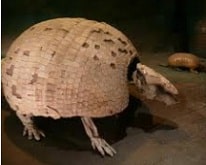Geology is the science dedicated to the study of the history of planet Earth , focusing on the origins, evolution and characteristics of the materials that make it up. To facilitate his analysis, he resorts to a temporal frame of reference through various divisions and subdivisions of time.
 On the geological time scale , we find periods , which are subdivided into epochs . Epochs, in turn, are subdivided into ages .
On the geological time scale , we find periods , which are subdivided into epochs . Epochs, in turn, are subdivided into ages .
The Pleistocene is called the first period of the Quaternary period, which is part of the Cenozoic era. The Pleistocene began two million years ago and lasted until about 10,000 years ago.
Pleistocene you should know that it is a neologism that was given form using two Greek terms. On the one hand, “pleistos”, which can be translated as “the maximum”, and “kainos”, which is synonymous with “new” and “recent”.
It can be said that, among the periods of the Cenozoic era, is the Quaternary . This period has several epochs: one of them, the first to be more precise, is the Pleistocene . At the end of the Pleistocene, the Holocene began, valid until today.
Tarantian, Ionian, Calabrian y Gelasian son las cuatro ages que componen el Pleistocene. Hay que destacar que en esta época se desarrollaron las last terrestrial glaciations.
The Gelanian is the period that began 2,588 million years ago and ended 1,806 million years ago. After him came the Calabrian (1806 – 781 million years ago), then the Ionian (781 – 126 million years ago) and, finally, the Tarantian, which is the predecessor of the Holocene epoch.
At the time of the Pleistocene , therefore, large sheets of ice covered a large portion of our planet 's territory. It was in this geological era that mammals established their predominance, with species such as the mammoth , the glyptodont and the smilodon .
It is important to mention that in the late Pleistocene Homo sapiens appeared on the African continent. Those first humans were hunter-gatherers and used stone and bone tools and utensils. Hunting advanced over the years, as the brain of Homo sapiens enlarged.
Other interesting data about the Pleistocene are the following:
-Among the birds that existed at that time, some stand out such as the athene cretensis, the fulica montanei, the pelagornis or the teratornis.
-It is also known as Ice Age. That name came from it because at that time it is estimated that around 30% of our planet was covered by ice.
-During this period there was a cooling of the Earth that caused different animal species to be drastically altered and even disappear.
-It is interesting to know that the so-called land bridges emerged, which appeared under the sea. Among the most significant we can highlight the Bering land bridge.
-At this time it is established that the continents already occupied the place they have today.
-Experts in the Pleistocene point out that at this time there was a lack of rain and that evaporation of seas and lakes hardly occurred.
